Enoki Mushroom: The Complete Guide to This Delicate and Nutritious Fungi
What Are Enoki Mushrooms?
Enoki mushrooms (Flammulina velutipes) are distinctive long, thin white mushrooms with tiny caps that have been treasured in East Asian cuisine for centuries. These elegant fungi are immediately recognizable by their slender stems and small, delicate caps, often resembling a bundle of noodles or sprouts. In the wild, enoki mushrooms appear quite different – with shorter stems, larger caps, and a yellow-brown or orange color – compared to the cultivated white variety most commonly found in markets today.
Native to China, Japan, and Korea, enoki mushrooms grow naturally on the stumps and trunks of Chinese hackberry trees, ash trees, mulberry trees, and persimmon trees. The name "enoki" comes from the Japanese word for the Chinese hackberry tree (enokitake), where these mushrooms frequently grow in the wild. They're also known by other names including golden needle mushrooms, winter mushrooms, or lily mushrooms.
The cultivated version of enoki mushrooms is grown in dark environments with high carbon dioxide levels, which contributes to their characteristic long, thin, white appearance. This cultivation method developed in Japan has made enoki mushrooms widely available year-round, though they naturally flourish during the colder months of fall and winter, giving rise to one of their common names, "winter mushrooms."
With their mild flavor and distinctive crunchy texture, enoki mushrooms have become increasingly popular globally, finding their way into diverse cuisines far beyond their East Asian origins.
Nutritional Profile of Enoki Mushrooms
Enoki mushrooms offer an impressive nutritional profile while being exceptionally low in calories. These slender fungi provide substantial nutrition with minimal caloric content, making them an excellent addition to health-conscious diets. Here's what you'll find in a typical 100-gram serving:
-
Caloric content: Extremely low at approximately 30-40 calories per 100g serving
-
Protein: Contains about 2.4g of protein, with a complete amino acid profile
-
Carbohydrates: Approximately 5g, with most being complex carbohydrates
-
Dietary fiber: Around 2.7g, supporting digestive health
-
Fat: Minimal fat content at less than 0.3g
-
Vitamins:
- Niacin (vitamin B3): Supports energy metabolism
- Thiamine (vitamin B1): Essential for nervous system function
- Riboflavin (vitamin B2): Important for cellular growth
- Folate (vitamin B9): Crucial for DNA synthesis and repair
- Vitamin D: One of the few food sources of this important vitamin
-
Minerals:
- Potassium: Supports heart and muscle function
- Phosphorus: Essential for bone health
- Iron: Critical for oxygen transport in the body
- Copper: Important for energy production and iron metabolism
- Selenium: A powerful antioxidant mineral
-
Antioxidants: Contains various antioxidant compounds that help combat oxidative stress
-
Bioactive compounds: Features unique polysaccharides and beta-glucans with medicinal properties
This nutritional composition makes enoki mushrooms particularly valuable for weight management, immune support, and as part of balanced nutrition plans. Their high-nutrient, low-calorie profile exemplifies the concept of nutrient density, providing substantial health benefits in a very low-calorie package.

Health Benefits of Enoki Mushrooms
Immune System Support
Enoki mushrooms offer remarkable immune-enhancing properties:
-
Beta-glucan content: These soluble fibers have been shown to activate and modulate immune response, particularly macrophages and natural killer cells.
-
Antiviral properties: Several studies have investigated enoki extract's potential to inhibit viral replication.
-
Antibacterial effects: Compounds in enoki mushrooms demonstrate activity against certain bacterial strains.
-
Enhanced white blood cell activity: Research suggests enoki consumption may support the function and production of white blood cells.
-
Balanced immune response: Unlike some immune stimulants, enoki appears to help modulate immune function, potentially beneficial for autoimmune conditions.
These immune-enhancing effects may be particularly valuable during cold and flu season or periods of increased immune stress.
Cancer-Fighting Potential
Research into enoki's anti-cancer properties shows promising results:
-
Flammulin: This protein found in enoki has demonstrated anti-tumor effects in laboratory studies.
-
Proflamin: Another compound unique to enoki that shows potential in supporting cancer treatment.
-
Apoptosis promotion: Several studies indicate enoki extracts may induce programmed cell death in certain cancer cells.
-
Angiogenesis inhibition: Some components may help prevent the formation of new blood vessels that feed tumors.
-
Traditional use: In Japanese folk medicine, enoki has been used as a complementary approach for cancer patients for centuries.
While more human studies are needed, the preliminary research on enoki's anti-cancer properties offers promising avenues for further investigation.
Heart Health Benefits
Enoki mushrooms support cardiovascular health through multiple mechanisms:
-
Cholesterol management: Studies suggest enoki consumption may help reduce LDL (bad) cholesterol levels while supporting HDL (good) cholesterol.
-
Blood pressure regulation: Certain compounds may help maintain healthy blood pressure levels.
-
Antioxidant protection: The antioxidants in enoki help prevent oxidative damage to blood vessels.
-
Anti-inflammatory effects: By reducing vascular inflammation, enoki may support overall heart health.
-
Fiber content: The dietary fiber in enoki supports healthy cholesterol levels and overall cardiovascular function.
Regular consumption of enoki mushrooms as part of a balanced diet may contribute to long-term heart health maintenance.
Digestive System Support
The digestive benefits of enoki mushrooms include:
-
Prebiotic properties: The fiber in enoki feeds beneficial gut bacteria, supporting a healthy microbiome.
-
Digestive enzyme support: Certain compounds may enhance the activity of digestive enzymes.
-
Low FODMAP status: Unlike some mushrooms, enoki is generally well-tolerated by those with sensitive digestive systems.
-
Liver support: Research suggests enoki may help protect liver cells and support detoxification processes.
-
Anti-inflammatory effects: May help soothe inflammatory conditions in the digestive tract.
These digestive benefits make enoki an excellent addition to gut-health focused diets.
Weight Management Support
Enoki mushrooms are particularly valuable for weight management:
-
Extremely low calorie: With just 30-40 calories per 100g serving, enoki provides volume and nutrition with minimal caloric impact.
-
High fiber content: Creates satiety and fullness while slowing digestion and stabilizing blood sugar.
-
Protein content: The modest protein content contributes to satiety and muscle maintenance during weight loss.
-
Low fat: Virtually fat-free while still providing satisfying texture and flavor.
-
Metabolic support: Some research suggests compounds in enoki may support healthy metabolism.
Incorporating enoki mushrooms into meals can increase volume and nutrition while keeping calorie counts low, a valuable strategy for sustainable weight management.

Culinary Uses of Enoki Mushrooms
Traditional Asian Applications
In their native cuisines, enoki mushrooms feature prominently:
-
Japanese cuisine:
- Hot pot dishes (nabemono) where enoki is added at the last minute
- Miso soup enhancement
- Nimono (simmered dishes) with vegetables
- Tempura preparations for a unique crispy texture
-
Korean cuisine:
- Key ingredient in various jeongol (hot pots)
- Added to japchae (glass noodle stir-fry)
- Featured in bibimbap (mixed rice bowls)
- Used in various banchan (side dishes)
-
Chinese cuisine:
- Essential in many hot pot variations
- Stir-fried with vegetables
- Added to clear soups for texture and nutrition
- Incorporated into dumpling fillings
-
Other traditional uses:
- Vietnamese pho additions
- Thai salads and soups
- Various fermented preparations
These traditional applications generally emphasize enoki's delicate texture and ability to absorb surrounding flavors.
Modern Culinary Applications
Contemporary chefs have expanded enoki's culinary repertoire:
-
Salad applications:
- Raw in Asian-inspired salads
- Quick-pickled for acidity and crunch
- As a garnish for poke bowls and fusion dishes
-
Pasta and noodle dishes:
- Mixed with traditional Italian pasta
- As a topping for ramen and udon
- Combined with spiralized vegetable "noodles"
-
Sandwich and burger enhancements:
- Quick-sautéed as a topping for gourmet burgers
- Added to Vietnamese banh mi for texture
- Incorporated into vegetarian sandwiches
-
Innovative preparations:
- Crispy fried as a snack or garnish
- Blended into vegetarian pâtés
- As a pizza topping
- In risotto for texture contrast
-
Plant-based meat alternatives:
- Incorporated into vegetarian "crab" cakes
- As a component in mushroom-based burger patties
- In vegan "seafood" dishes for their unique texture
The mild flavor and distinctive texture of enoki make it exceptionally versatile in contemporary cooking across culinary traditions.
Basic Preparation Methods
Before incorporating enoki into recipes, proper preparation is essential:
-
Cleaning techniques:
- Avoid washing if possible; instead, wipe with a damp paper towel
- If washing is necessary, rinse very quickly under cold water and dry immediately
- Never soak enoki mushrooms as they absorb water rapidly
-
Trimming guidelines:
- Cut off the woody base where the mushrooms cluster together
- Separate the individual strands gently with your fingers
- For certain recipes, cutting the long strands in half may be preferable
-
Raw applications:
- Can be enjoyed raw in salads and as garnishes
- Consider marinating briefly in citrus juice or rice vinegar to enhance flavor
- Pair with ingredients that complement their mild taste
-
Cooking considerations:
- Requires minimal cooking time—typically just 30-60 seconds
- Add at the end of cooking for soups, stir-fries, and hot pots
- Can become mushy if overcooked
-
Oil and fat interactions:
- Absorbs flavored oils effectively
- Benefits from quick tossing in sesame oil before adding to dishes
- Does not require much oil during cooking
Understanding these basic preparation principles will ensure the best texture and flavor when working with this delicate mushroom.

Selecting and Storing Enoki Mushrooms
How to Choose Fresh Enoki
When purchasing enoki mushrooms, look for these quality indicators:
-
Color: Should be uniformly white or off-white for cultivated varieties (wild enoki will be tan to dark brown)
-
Firmness: The stems should be firm and crisp, not soft or slimy
-
Caps: Small caps should be tight and compact, not open or discolored
-
Cluster integrity: The bundle should hold together well, not falling apart
-
Moisture level: Should appear dry but not desiccated; avoid mushrooms sitting in visible moisture
-
Base condition: The base where the stems join should be clean and not discolored
-
Aroma: Should have a mild, fresh mushroom scent without any sourness or ammonia smell
-
Packaging: If pre-packaged, look for containers with proper ventilation to prevent moisture buildup
These quality indicators help ensure you're selecting enoki mushrooms at peak freshness for optimal flavor and texture.
Proper Storage Techniques
To maximize shelf life and maintain quality:
-
Refrigeration approach:
- Store in the original packaging if it provides ventilation
- Alternatively, wrap loosely in paper towels, then place in a partially open plastic bag
- Store in the refrigerator's vegetable drawer
-
Optimal temperature: Keep at 36-40°F (2-4°C) for best preservation
-
Moisture management: Critical for enoki preservation
- Change damp paper towels if moisture accumulates
- Avoid storing near items that release ethylene gas (apples, bananas, avocados)
-
Expected shelf life:
- When properly stored: 5-7 days
- Signs of spoilage: sliminess, darkening, off-odors
-
Freezing options:
- Not ideal for raw enoki due to texture changes after thawing
- Can be blanched for 30 seconds, drained thoroughly, then frozen for soups and stews
- Use frozen enoki within 2-3 months
-
Drying possibilities:
- Can be dried in a dehydrator at 125°F (52°C) until completely crisp
- Dried enoki should be stored in airtight containers and used within 6 months
- Rehydrate by soaking in warm water for 20-30 minutes
Proper storage techniques significantly extend the usability of these delicate mushrooms while preserving their distinctive texture and flavor.
Growing Enoki Mushrooms
Commercial Cultivation Practices
Modern enoki production employs specialized techniques:
-
Substrate composition:
- Primary medium: Sawdust from hardwoods (typically oak or beech)
- Nutritional amendments: Rice or wheat bran (10-15% of substrate)
- pH adjustment: Calcium carbonate (1-2% of substrate)
- Moisture content: Maintained at 58-65%
-
Environmental conditions:
- Temperature: Colonization at 72-77°F (22-25°C); fruiting at 50-55°F (10-13°C)
- Humidity: 85-95% during fruiting
- CO₂ levels: Elevated to 5,000-10,000 ppm to induce long stem growth
- Light: Minimal light during fruiting produces the characteristic white color
-
Cultivation containers:
- Specialized bottles or elongated bags that force vertical growth
- Material typically compressed to provide density for structural support
-
Growth timeline:
- Mycelium colonization: 20-30 days
- Pinning induction: Temperature drop and increased fresh air
- Fruiting period: 10-14 days until harvest
- Total cycle: Approximately 40-50 days from inoculation to harvest
-
Yield considerations:
- Typical yield: 80-100% of substrate weight
- Multiple flushes: Usually 2-3 harvests from the same substrate
- Quality control: Maintaining low contamination rates crucial for commercial viability
These specialized cultivation practices have made enoki one of the most efficiently produced specialty mushrooms worldwide.
Home Cultivation Methods
Growing enoki at home is achievable with the right approach:
-
Substrate options for home growers:
- Hardwood sawdust supplemented with bran (easiest for beginners)
- Hardwood logs (more traditional but longer process)
- Commercial mushroom growing kits (simplest entry point)
-
Basic equipment needed:
- Pressure cooker for sterilization
- Clear plastic bags or containers
- Spray bottle for maintaining humidity
- Thermometer and hygrometer for environmental monitoring
- Optional: small greenhouse or humidity tent
-
Step-by-step process:
- Prepare and sterilize substrate mixture
- Inoculate with purchased enoki spawn when cooled
- Incubate at room temperature until fully colonized (white throughout)
- Transfer to colder environment (refrigerator works well) for fruiting
- Maintain high humidity by misting regularly
- Harvest when mushrooms reach 3-4 inches in height
-
Common challenges:
- Contamination: Preventing mold and bacterial growth
- Insufficient pinning: Often due to improper temperature shock or humidity
- Abnormal growth forms: Usually related to CO₂ levels or lighting
-
Expected timeline for home growers:
- Approximately 30-40 days for first harvest from inoculation
- Commercial kits may produce results faster, often within 10-14 days of activation
Home cultivation of enoki can be rewarding both culinarily and educationally, providing fresh mushrooms with minimal space requirements.
Enoki Mushroom Recipes
Simple Enoki Side Dishes
These easy preparations showcase enoki's delicate flavor and texture:
-
Garlic Butter Enoki
- Ingredients:
- 200g enoki mushrooms, base removed and separated
- 2 tablespoons butter
- 3 garlic cloves, minced
- 1 tablespoon soy sauce
- 1 teaspoon sesame oil
- Chopped green onions for garnish
- Instructions:
- Melt butter in a pan over medium heat
- Add garlic and sauté until fragrant, about 30 seconds
- Add enoki mushrooms and stir-fry for 1 minute
- Add soy sauce and sesame oil, toss quickly for 30 seconds
- Garnish with green onions and serve immediately
- Ingredients:
-
Sesame Enoki Salad
- Ingredients:
- 150g enoki mushrooms, base removed and separated
- 1 tablespoon rice vinegar
- 1 tablespoon toasted sesame oil
- 1 teaspoon soy sauce
- 1 teaspoon honey or maple syrup
- 1 tablespoon toasted sesame seeds
- Instructions:
- Blanch enoki in boiling water for 10 seconds, then immediately transfer to ice water
- Drain well and pat dry with paper towels
- Whisk together remaining ingredients for dressing
- Toss enoki with dressing and sprinkle with sesame seeds
- Let marinate for 10 minutes before serving
- Ingredients:
-
Crispy Enoki Fritters
- Ingredients:
- 200g enoki mushrooms, base removed, kept in clusters
- 1/2 cup tempura flour or all-purpose flour
- 1/4 teaspoon salt
- 1/4 teaspoon garlic powder
- 1/8 teaspoon white pepper
- 1/2 cup cold water
- Oil for frying
- Instructions:
- Mix flour and seasonings, then add cold water to create a thin batter
- Dip enoki clusters into batter, coating lightly
- Deep fry at 350°F (175°C) until golden and crispy, about 2-3 minutes
- Drain on paper towels and serve immediately with dipping sauce
- Ingredients:
These simple preparations highlight enoki's versatility while requiring minimal preparation time.
Enoki in Soups and Hot Pots
Enoki mushrooms excel in broth-based dishes:
-
Miso Soup with Enoki
- Ingredients:
- 4 cups dashi or vegetable broth
- 3 tablespoons miso paste
- 150g enoki mushrooms, base removed and separated
- 1 block soft tofu, cubed
- 2 green onions, thinly sliced
- 1 tablespoon wakame seaweed (optional)
- Instructions:
- Bring dashi to a gentle simmer
- Dissolve miso paste in a small amount of the hot broth, then return to pot
- Add tofu and wakame if using, simmer for 2 minutes
- Add enoki mushrooms and cook for just 30 seconds
- Garnish with green onions and serve immediately
- Ingredients:
-
Enoki Ramen Enhancement
- Ingredients:
- Your favorite ramen, prepared according to package
- 100g enoki mushrooms, base removed and separated
- 1 soft-boiled egg
- 1 sheet nori, cut into strips
- 1 tablespoon chopped green onions
- Instructions:
- Prepare ramen according to package directions
- In the last 30 seconds of cooking, add the enoki mushrooms
- Transfer to serving bowl and top with soft-boiled egg, nori, and green onions
- Ingredients:
-
Shabu-Shabu Hot Pot with Enoki
- Ingredients:
- 6 cups dashi or chicken broth
- 200g thinly sliced beef or pork
- 150g enoki mushrooms, base removed, separated into small bundles
- Assorted vegetables (napa cabbage, carrots, spinach)
- Dipping sauces (ponzu and goma dare)
- Cooked rice to serve alongside
- Instructions:
- Bring broth to a simmer in a hot pot at the table
- Arrange meat, enoki, and vegetables on a platter
- Each diner cooks ingredients in the simmering broth
- Enoki typically needs just 10-15 seconds in the hot broth
- Dip cooked items in sauces and enjoy with rice
- Ingredients:
The quick-cooking nature of enoki makes it perfect for these soup applications, where it can be added at the last minute.
Main Course Enoki Recipes
Enoki can also play a starring role in these satisfying entrées:
-
Enoki Mushroom Pasta
- Ingredients:
- 8 oz spaghetti or linguine
- 200g enoki mushrooms, base removed and separated
- 3 tablespoons olive oil
- 4 garlic cloves, thinly sliced
- 1/4 teaspoon red pepper flakes
- 2 tablespoons butter
- 1/4 cup grated Parmesan cheese
- 2 tablespoons chopped parsley
- Salt and pepper to taste
- Instructions:
- Cook pasta according to package directions
- Meanwhile, heat olive oil in a large pan over medium heat
- Add garlic and red pepper flakes, sauté until fragrant
- Add enoki mushrooms and cook for 1-2 minutes
- Drain pasta, reserving 1/4 cup cooking water
- Add pasta, butter, and reserved water to the pan
- Toss until butter melts and sauce coats pasta
- Remove from heat, add Parmesan and parsley, season with salt and pepper
- Ingredients:
-
Enoki Rice Bowl
- Ingredients:
- 2 cups cooked short-grain rice
- 150g enoki mushrooms, base removed and separated
- 1 tablespoon vegetable oil
- 1 tablespoon soy sauce
- 1 tablespoon mirin
- 1 teaspoon grated ginger
- 2 eggs
- 1 sheet nori, cut into strips
- 1 tablespoon toasted sesame seeds
- Sliced green onions for garnish
- Instructions:
- Heat oil in a pan over medium-high heat
- Add enoki and stir-fry for 30 seconds
- Add soy sauce, mirin, and ginger, cook for another 30 seconds
- Divide rice between two bowls
- Top with cooked enoki mushrooms
- Fry eggs sunny-side up and place on top of each bowl
- Garnish with nori strips, sesame seeds, and green onions
- Ingredients:
-
Enoki Mushroom Lettuce Wraps
- Ingredients:
- 200g enoki mushrooms, base removed and finely chopped
- 200g ground chicken or tofu
- 1 tablespoon vegetable oil
- 2 garlic cloves, minced
- 1 tablespoon grated ginger
- 2 tablespoons hoisin sauce
- 1 tablespoon soy sauce
- 1 teaspoon sesame oil
- 1/4 cup water chestnuts, diced
- 2 green onions, sliced
- 8-10 lettuce leaves (butter lettuce or iceberg)
- Sriracha or other hot sauce for serving
- Instructions:
- Heat oil in a pan over medium heat
- Add garlic and ginger, sauté until fragrant
- Add ground chicken or tofu, cook until browned
- Add chopped enoki mushrooms, cook for 2 minutes
- Stir in hoisin sauce, soy sauce, and sesame oil
- Add water chestnuts and green onions, cook for 1 minute
- Spoon mixture into lettuce leaves
- Serve with hot sauce on the side
- Ingredients:
These main courses demonstrate how enoki can be incorporated into satisfying meals across different culinary traditions.
Comparing Enoki to Other Mushrooms
Nutritional Comparisons
How enoki stacks up against other common mushrooms:
-
Calories and macronutrients:
- Enoki: 30-40 calories per 100g, lowest calorie content among common mushrooms
- Button mushrooms: 22 calories per 100g, slightly lower than enoki but less protein
- Shiitake: 34 calories per 100g, similar to enoki but higher in fiber
- Portobello: 22 calories per 100g, comparable to button mushrooms
- Oyster: 33 calories per 100g, similar to enoki with higher protein content
-
Protein content comparison:
- Enoki: 2.4g protein per 100g
- Button: 3.1g protein per 100g
- Shiitake: 2.2g protein per 100g
- Portobello: 2.1g protein per 100g
- Oyster: 3.3g protein per 100g
-
Vitamin content highlights:
- Enoki: Particularly high in niacin and thiamine
- Button: Higher in riboflavin but lower in niacin than enoki
- Shiitake: Higher in vitamin D but lower in B vitamins than enoki
- Portobello: Highest in vitamin D when exposed to UV light
- Oyster: Exceptional riboflavin content, higher than other mushrooms
-
Mineral content considerations:
- Enoki: Higher in potassium and iron than most varieties
- Button: Lower in most minerals compared to specialty mushrooms
- Shiitake: Higher in copper and selenium
- Portobello: Good source of selenium and potassium
- Oyster: Particularly high in iron and zinc
-
Unique compounds:
- Enoki: Contains flammulin and proflamin, not found in other mushrooms
- Shiitake: Contains lentinan, a well-studied immune compound
- Oyster: Contains lovastatin-like compounds that may benefit cholesterol
- Portobello: Contains ergothioneine, a powerful antioxidant
- Button: Lower in specialty compounds than medicinal mushrooms
This nutritional comparison highlights enoki's unique position as an extremely low-calorie option with impressive nutritional density.
Culinary Texture and Flavor Differences
How enoki's culinary properties compare to other mushrooms:
-
Texture profile:
- Enoki: Crisp, crunchy stems with tender caps; maintains texture with brief cooking
- Button: Firm, meaty texture that softens considerably when cooked
- Shiitake: Tender, slightly chewy texture with distinct umami character
- Portobello: Dense, meaty texture similar to button but more substantial
- Oyster: Delicate, velvety texture that becomes tender quickly
-
Flavor intensity scale:
- Enoki: Very mild, subtle flavor; absorbs other flavors well
- Button: Mild earthy flavor that intensifies when cooked
- Shiitake: Rich, woody, umami flavor; among the most flavorful mushrooms
- Portobello: Deep, meaty flavor, especially when grilled
- Oyster: Mild, subtly sweet flavor with anise notes
-
Cooking method suitability:
- Enoki: Best for brief cooking, raw applications, soups, and hot pots
- Button: Versatile for most cooking methods including stuffing and roasting
- Shiitake: Excellent for sautéing, grilling, and adding to long-cooked dishes
- Portobello: Ideal for grilling, roasting, and as meat substitutes
- Oyster: Best for quick sautés, stir-fries, and soups
-
Culinary versatility comparison:
- Enoki: Excellent for Asian cuisine, limited as a meat substitute
- Button: Most versatile for Western cooking applications
- Shiitake: Strong in both Asian and Western recipes, excellent dried
- Portobello: Specialty in grilling and as meat alternatives
- Oyster: Versatile across cuisines, good meat substitute
-
Pairing compatibility:
- Enoki: Pairs well with delicate flavors, seafood, light broths
- Button: Pairs with nearly everything; very neutral
- Shiitake: Complements stronger flavors, meats, and rich sauces
- Portobello: Works with robust flavors, red wine reductions, grilled foods
- Oyster: Pairs well with dairy, chicken, and white wine
Understanding these differences helps cooks make informed choices about which mushroom varieties to use in specific culinary applications.
Frequently Asked Questions About Enoki Mushrooms
Are Enoki Mushrooms Safe to Eat Raw?
This common question has important considerations:
-
Safety perspective: Yes, commercially cultivated enoki mushrooms are generally safe to eat raw, unlike some other mushroom varieties.
-
Texture experience: Raw enoki has a pleasant crunch and mild flavor that works well in salads and as garnishes.
-
Bioavailability considerations: Some nutrients and beneficial compounds may be more bioavailable after light cooking.
-
Precautions:
- Always ensure enoki mushrooms are fresh and properly stored before consuming raw
- Wild-harvested enoki should always be cooked before consumption
- Those with compromised immune systems should generally avoid raw mushrooms of any variety
-
Best raw applications: Salads, garnishes, cold noodle dishes, and summer rolls
Light cooking (blanching for 10-15 seconds) can be a good middle ground for those concerned about consuming completely raw mushrooms.
How Can I Tell if Enoki Mushrooms Have Gone Bad?
Key indicators of spoilage to watch for:
-
Visual changes:
- Sliminess on the stems or caps
- Dark or brown spots developing
- Excessive moisture in the packaging
- Fuzzy growth of any kind
- Yellow or brown discoloration
-
Textural indicators:
- Loss of firmness or crispness
- Stems that break rather than bend
- Mushrooms that feel sticky when touched
-
Aroma changes:
- Any sour or ammonia-like smell
- Fermented odor
- Strong earthy smell (fresh enoki has only a very mild aroma)
-
Timing considerations:
- Enoki typically lasts 5-7 days properly refrigerated
- If unsure about freshness, always err on the side of caution
-
Partial spoilage handling:
- Unlike some produce, it's best not to salvage parts of an enoki cluster that shows spoilage
- The interconnected nature of mushrooms means contamination likely extends throughout
When in doubt about freshness, discard suspicious enoki mushrooms, as consuming spoiled specimens can cause digestive discomfort.
Have There Been Any Safety Concerns with Enoki Mushrooms?
Important food safety information about enoki:
-
Listeria outbreaks:
- Between 2016-2020, several listeria outbreaks were linked to imported enoki mushrooms
- These resulted in recalls of certain brands of enoki from specific regions
- The FDA has since increased inspection of imported enoki products
-
Prevention measures:
- Always purchase from reputable sources with good quality control
- Check for any active recalls before purchasing
- Store properly in the refrigerator
- Thoroughly cook enoki if you have concerns or are in a high-risk group
-
High-risk groups:
- Pregnant women
- Elderly individuals
- Those with compromised immune systems
- Young children
- These groups should consider cooking enoki thoroughly rather than consuming raw
-
Proper cooking guidelines:
- Heating to at least 165°F (74°C) kills listeria and other potential pathogens
- Even brief cooking (30-60 seconds) in hot liquid is generally sufficient
-
Current status:
- Quality control has improved substantially since the outbreaks
- Regular testing protocols have been implemented by major producers
- The overall risk remains very low with properly handled enoki
Staying informed about food safety alerts and practicing good food hygiene minimizes any potential risks associated with enoki consumption.
Conclusion: Embracing Enoki Mushrooms in Your Diet
Enoki mushrooms represent a fascinating intersection of culinary delight and nutritional powerhouse. Their distinctive appearance, crisp texture, and mild flavor make them an accessible entry point for those new to specialty mushrooms, while their impressive nutritional profile offers substantial health benefits with minimal calories.
From their traditional uses in East Asian cuisines to their growing popularity in global cooking, enoki mushrooms demonstrate remarkable versatility. Whether added to soups, stir-fries, salads, or enjoyed as a unique side dish, these slender mushrooms bring both textural interest and nutritional advantages to countless recipes.
The research into enoki's medicinal properties continues to expand, suggesting benefits for immune function, heart health, cancer prevention, and more. While more studies are needed to fully understand these effects, the traditional wisdom that has valued these mushrooms for centuries appears increasingly supported by modern science.
Whether you're seeking to explore new culinary ingredients, increase your nutritional intake, or simply enjoy the distinctive texture and mild flavor of these remarkable fungi, enoki mushrooms offer a world of possibilities. With proper selection, storage, and preparation, these delicate mushrooms can become a regular and beneficial addition to a varied and health-conscious diet.

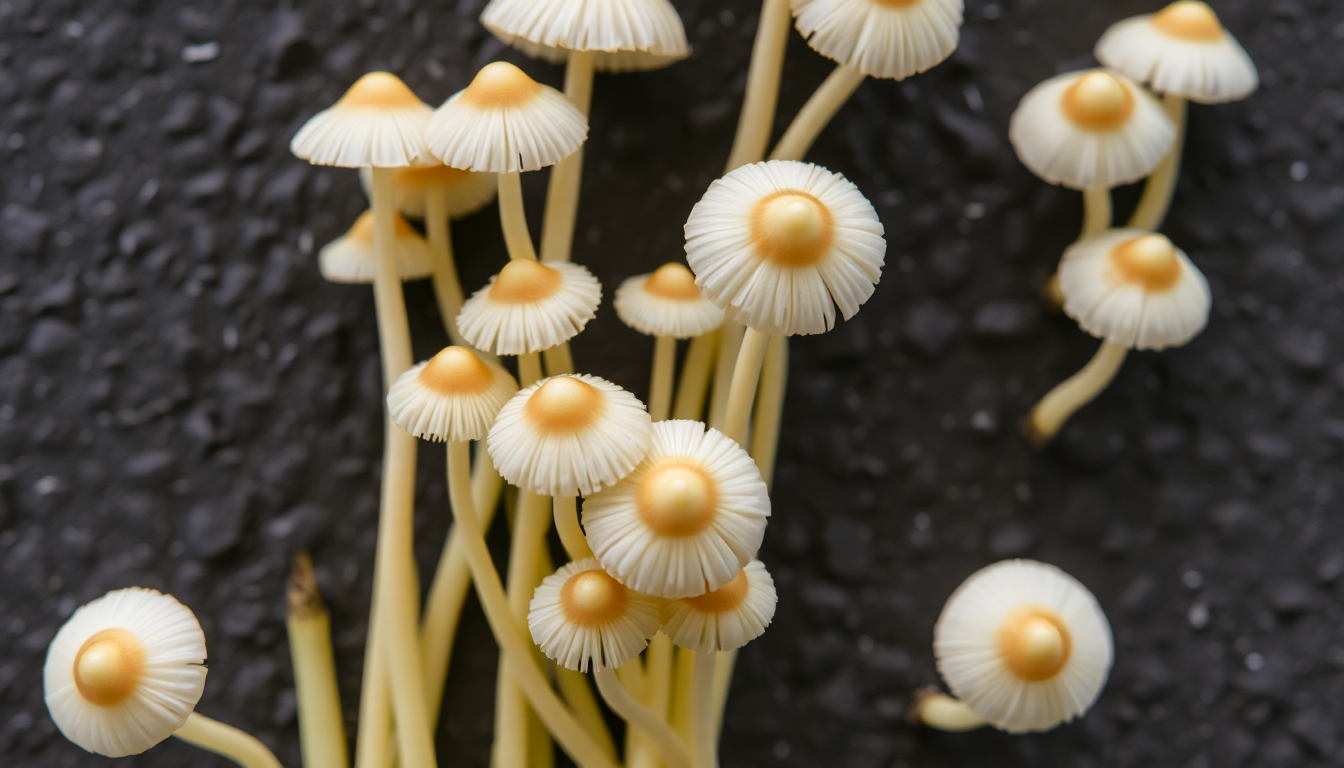


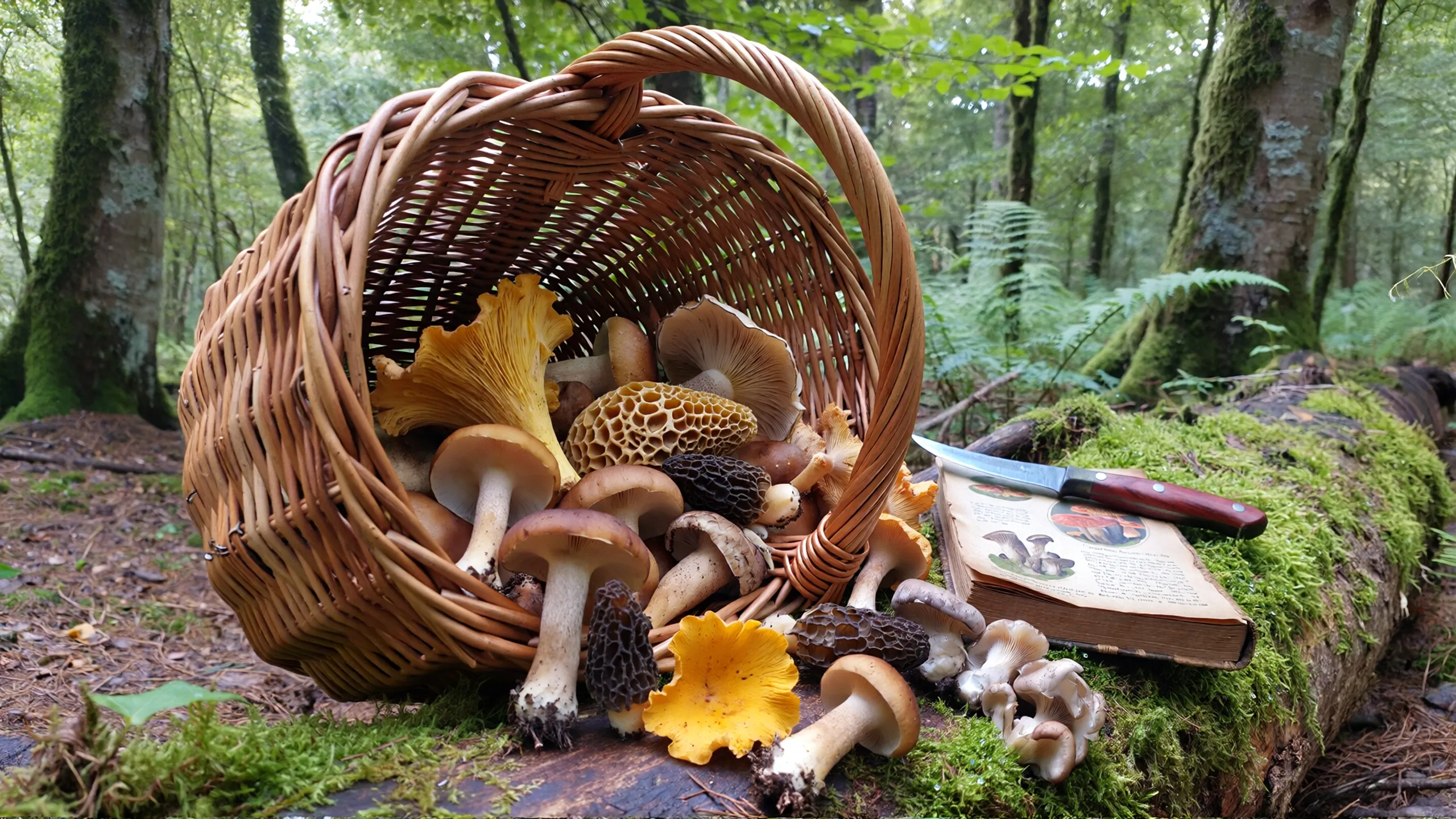

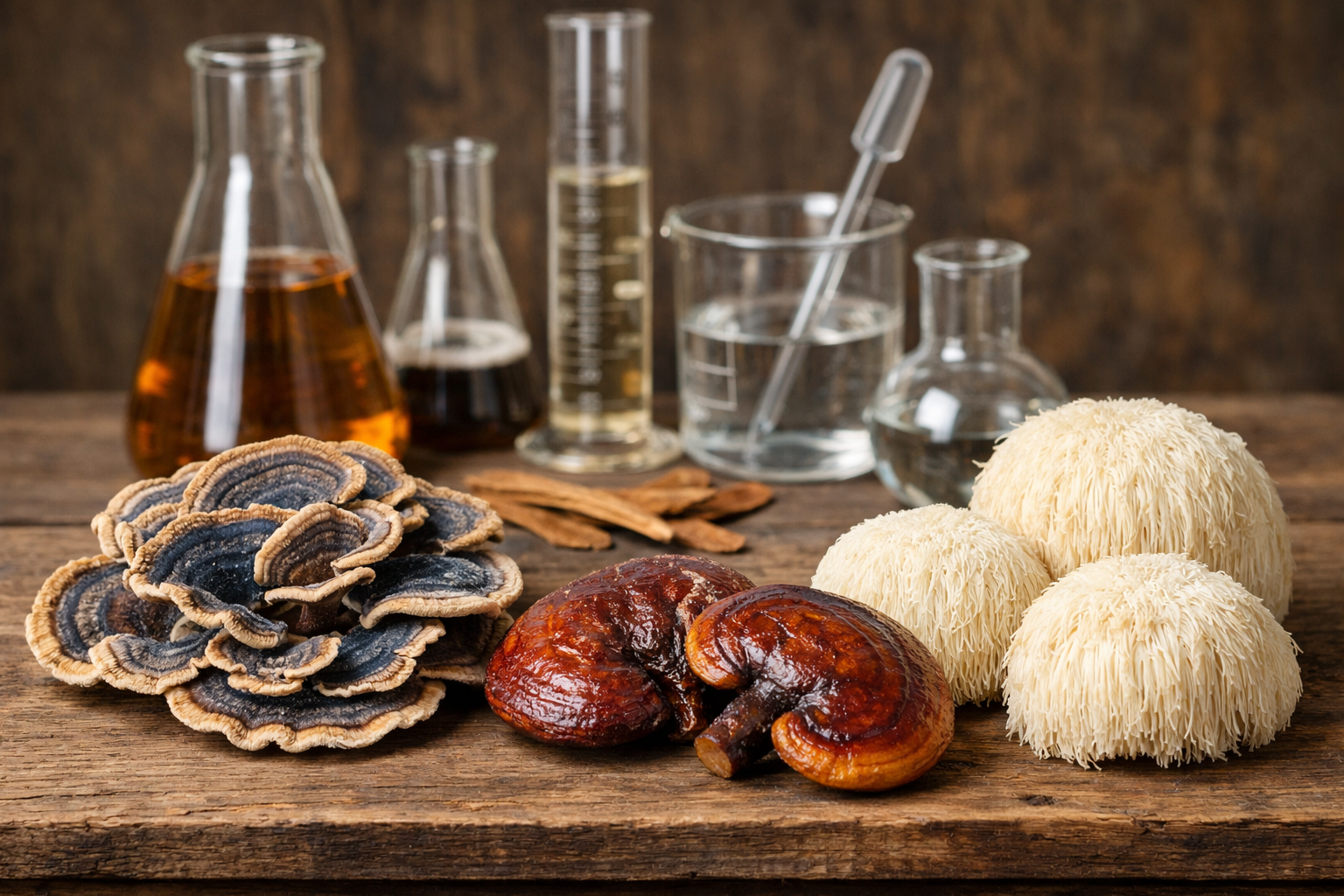
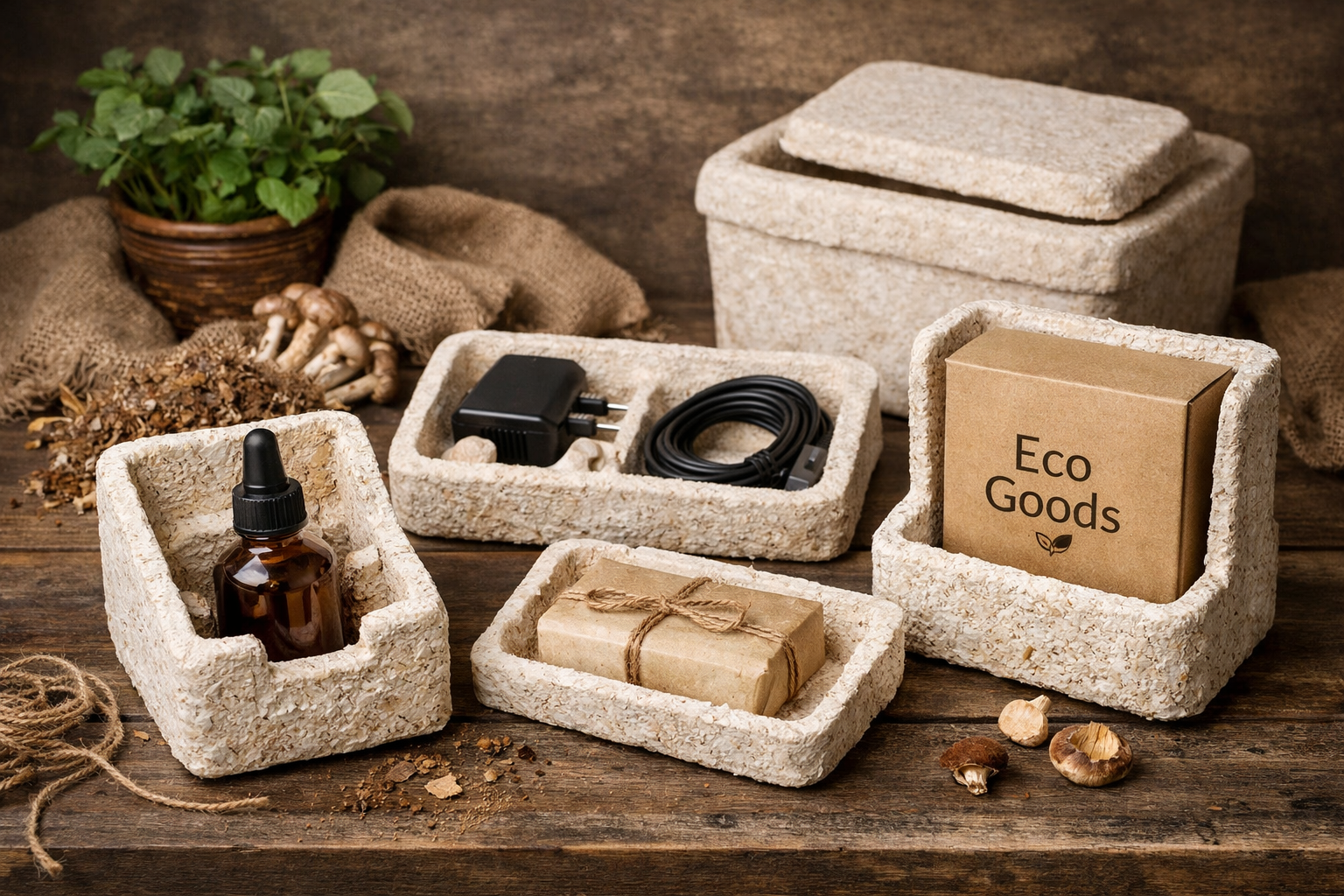

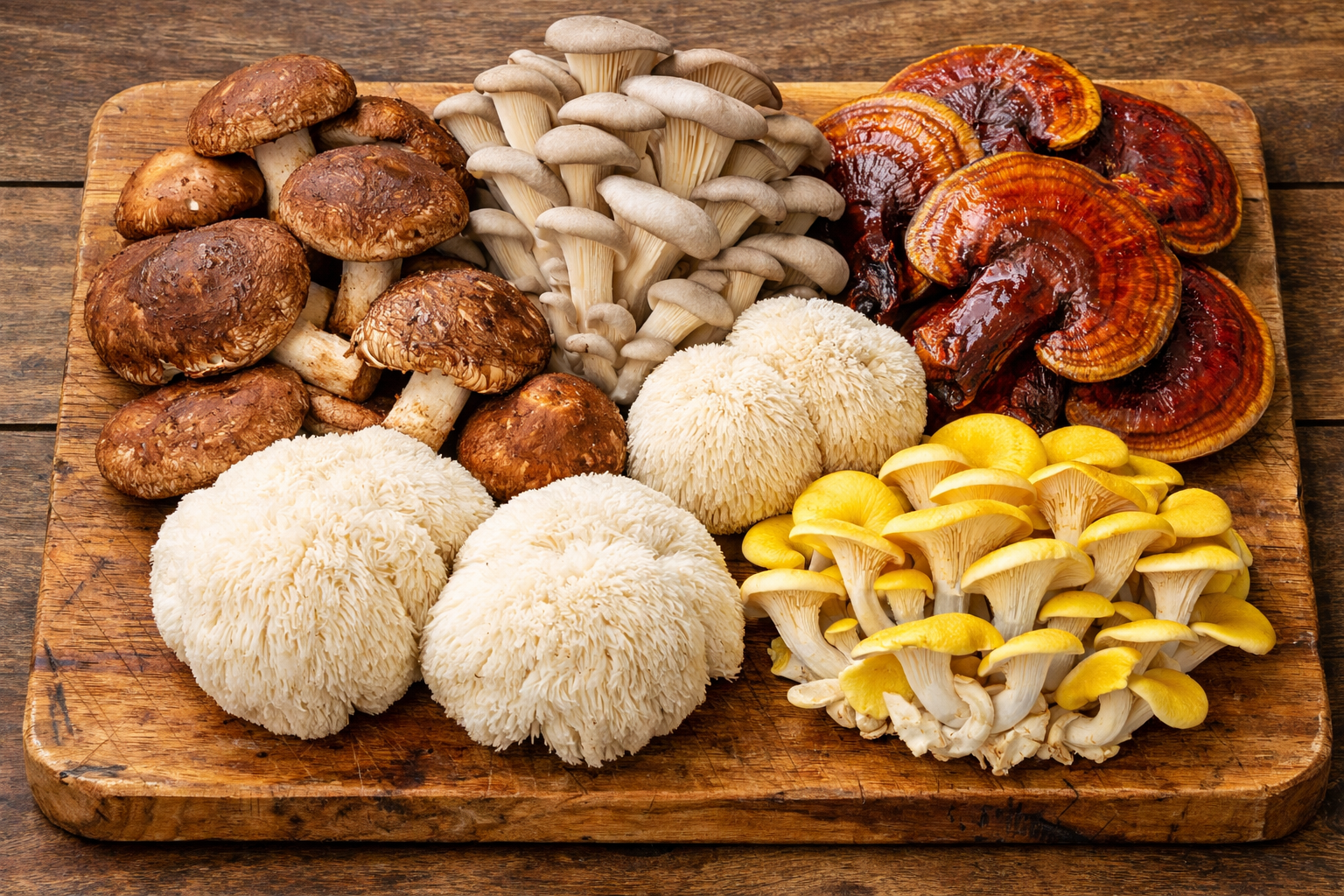
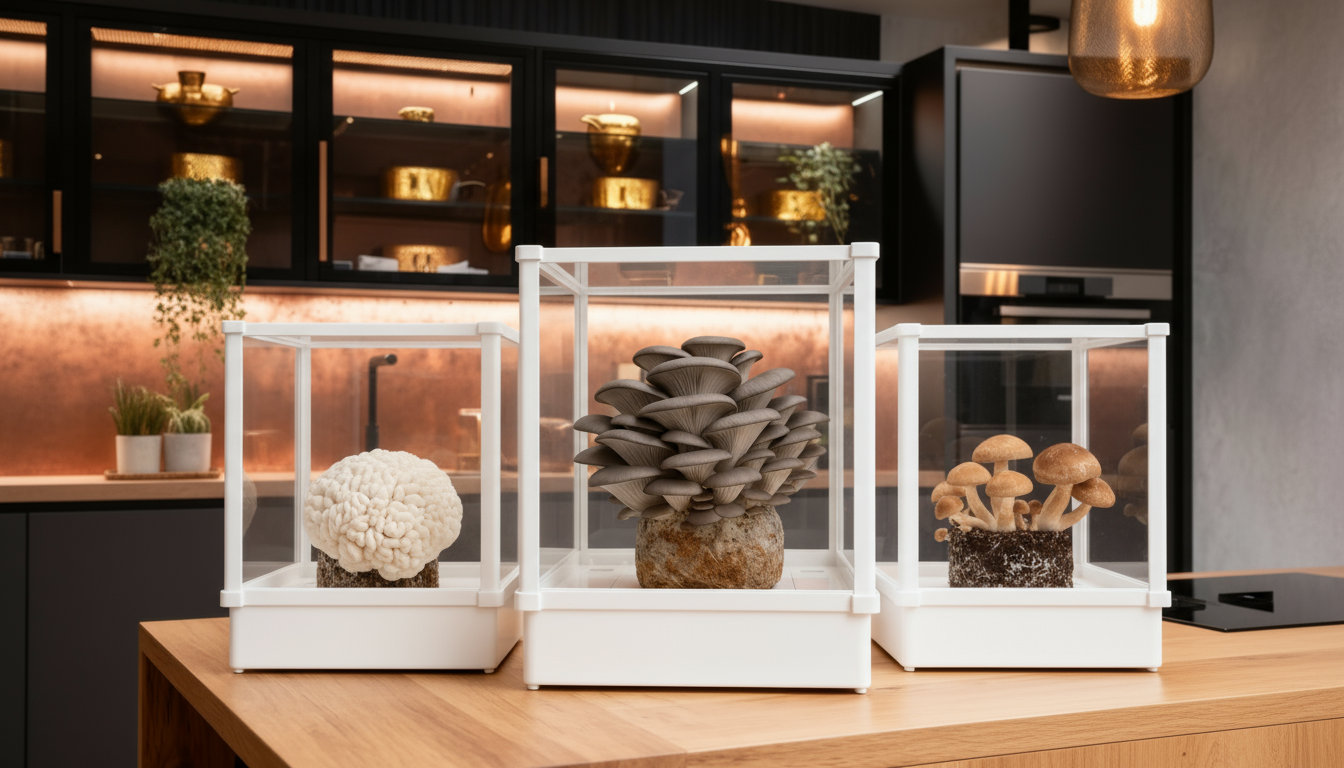
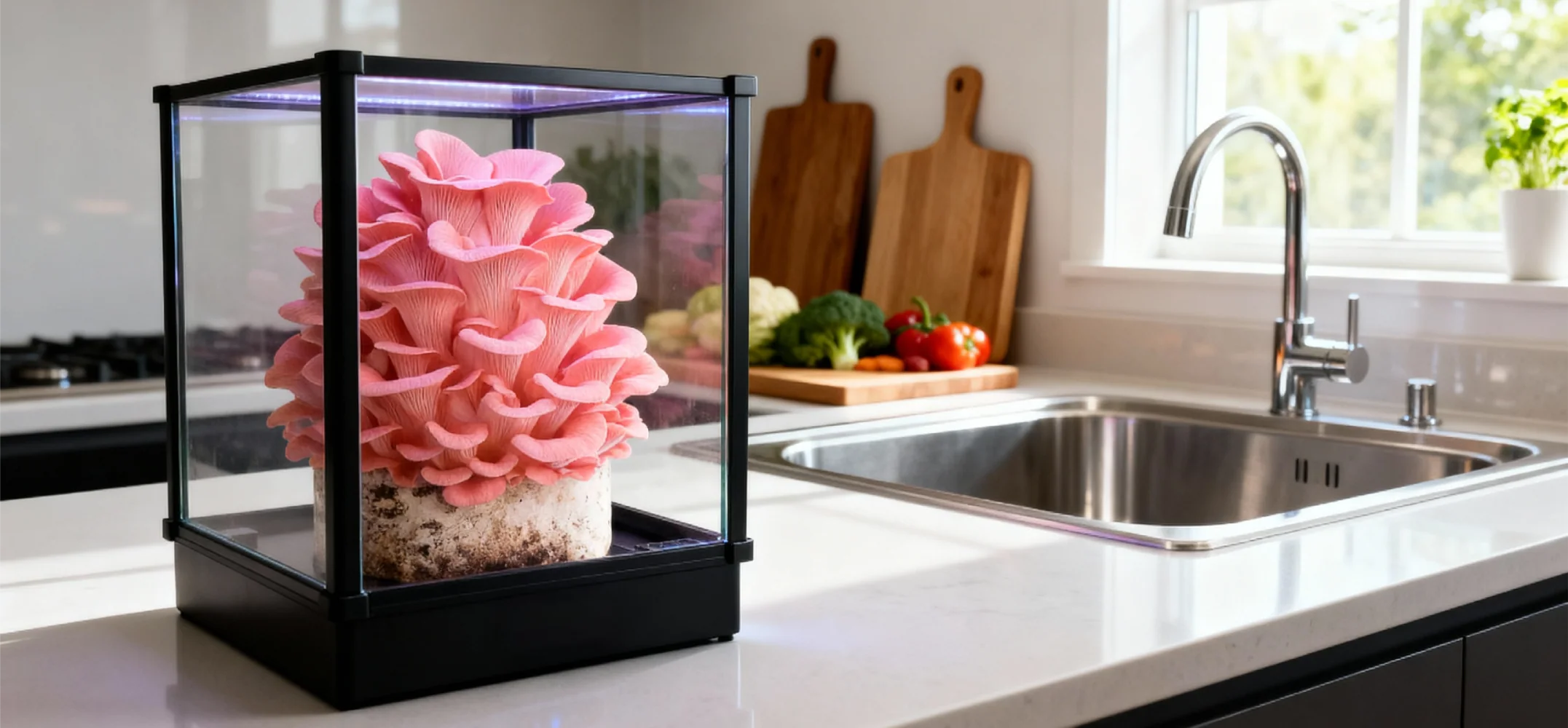
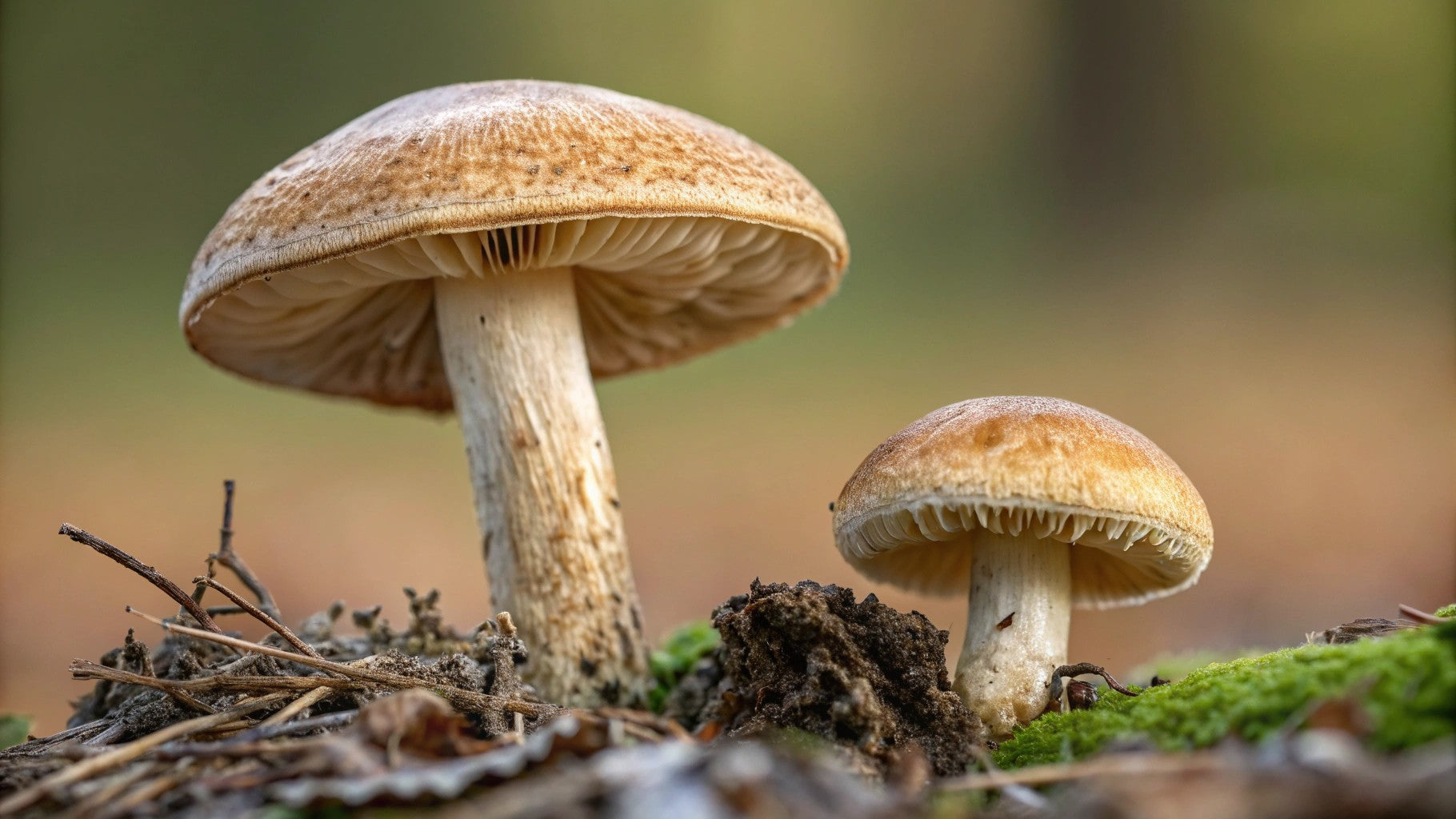
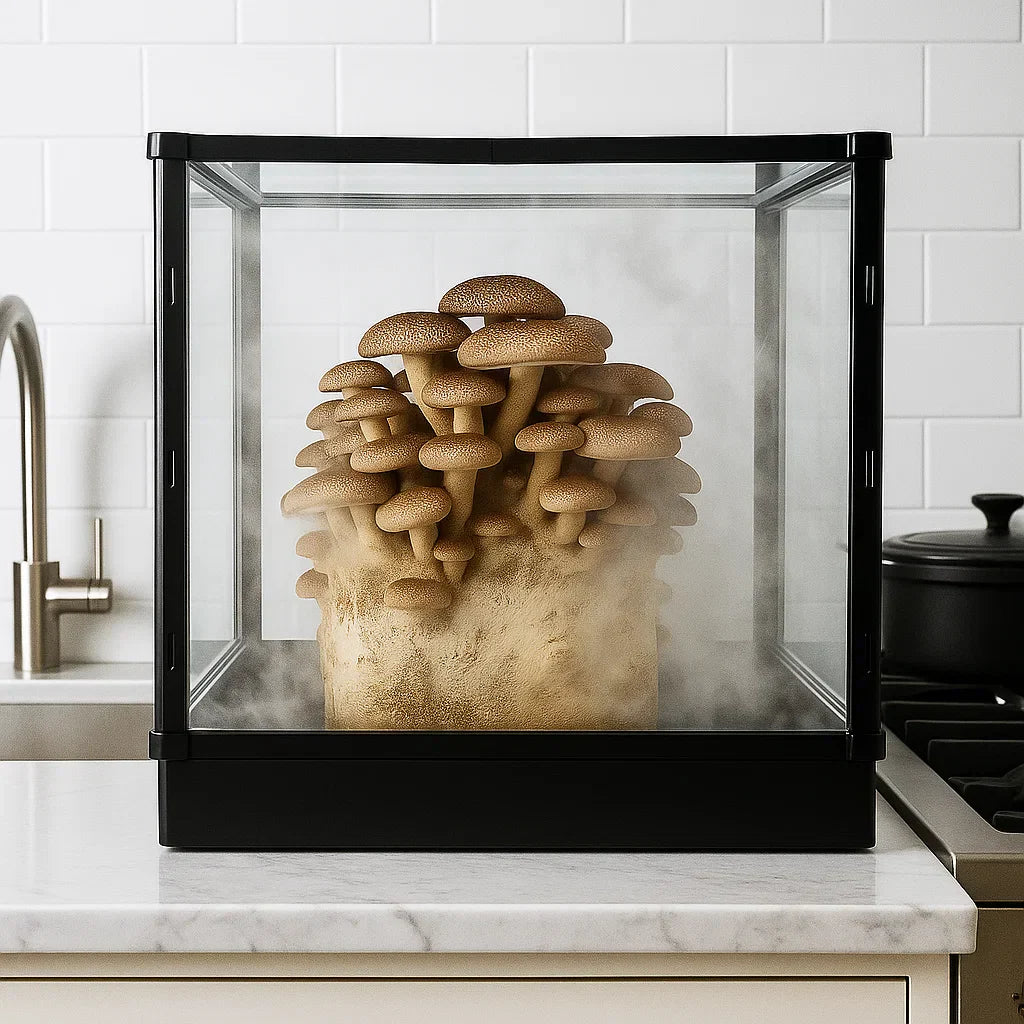
Share:
Can Dogs Eat Mushrooms? The Ultimate Pet Safety Guide (2025)
Oyster Mushrooms: A Beginner’s Delight and Growing Guide